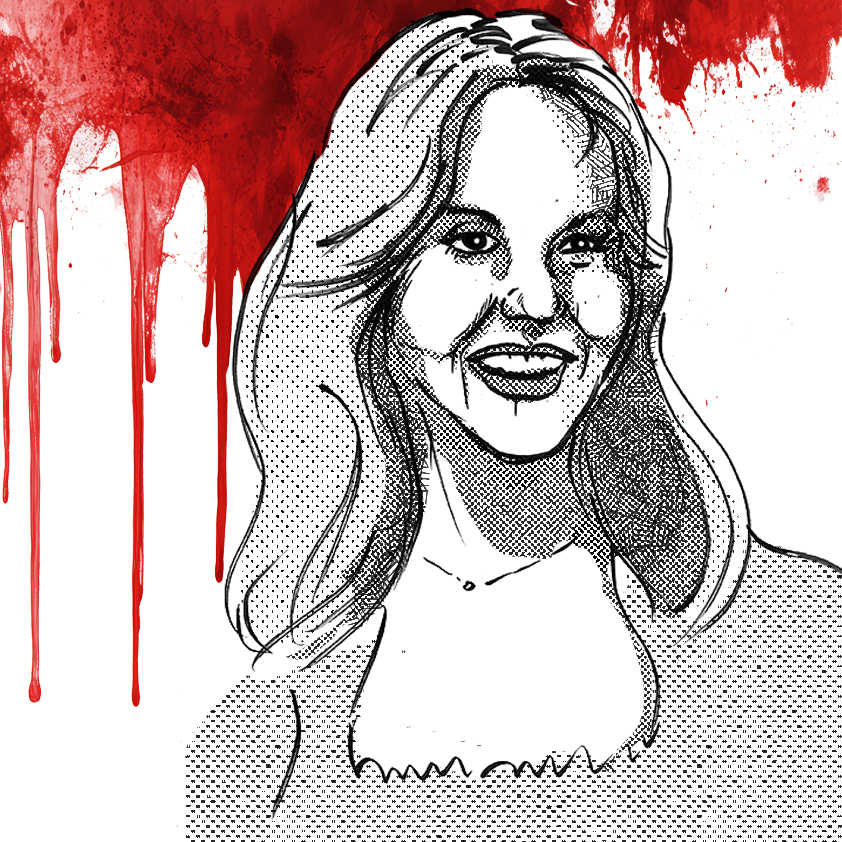
DCS: calisto tanzi

In 1961, 22-year old college dropout Calisto Tanzi opened a small pasteurization plant in Parma, Italy. As time went on, the business, Parmalat, grew and grew, branching out from dairy products to include bakery items, juices and other beverages. The company began trading on the Milan Stock Exchange as its expansion continued, mostly by acquisition.
In the early 2000s, a majority of Parmalat’s new divisions were operating at a loss. A bit of complicated and “creative” accounting told otherwise. Under Calisto’s direction, company executive officers were shifted around or fired and replaced. The monetary results of fund-raising efforts were shuffled through off-shore banks and other financial entities. Financial statements were forged. Goverment auditors detained Calisto and some of his colleagues, investigating Parmalat’s books. They discovered an actual debt of over 14.3 billion Euros, nearly eight times the company’s official report. In 2008, it was revealed that Calisto had embezzled 800 million Euros from the company. He was convicted of fraud and sentenced to 18 years in prison. After two years, he was placed under house arrest.
In 2011, Calisto was sentenced to an additional nine years for bankruptcy fraud and criminal association. A large cache of artwork by Picasso, Van Gogh, Gauguin, Cézanne, and Matisse was discovered at Calisto’s home — works he denied owning. The art was seized before it could be put up for sale.
In the wake of Calisto’s sentencing, several honorary titles and degrees were withdrawn by their issuing organizations.
In January 2022, Calisto passed away from pneumonia at the age of 82.
Comments
inktober 2025: week 3

Five-year old Linda Blair modeled for catalogues from Sears, JC Penney’s and Macy’s. Her print work led Linda to over 70 television commercials, including Welch’s Jelly and other national products. She enhanced her marketable skills by taking equestrian training. At 10, Linda had a regular role in a soap opera and landed small roles in films.
In 1972, Linda was chosen from a pool of 600 young ladies for the coveted role of “Regan MacNeil,” the daughter of an actress who happened to be possessed by an ancient demon, in the film adaptation of the celebrated novel The Exorcist. Her terrifying performance garnered praise as well as a Golden Globe and Academy Award nomination. To dispel rumors regarding Linda’s mental state during filming, Warner Brothers sent the young actress on a press tour to show she was just a normal teenager.
Linda tackled more controversial roles, including the TV movie Born Innocent about an abused teen, Sarah T – Portrait of a Teenage Alcoholic and several “women in prison” movies. She reprised her “Exorcist” role in the poorly-received Exorcist II: The Heretic. When that film wrapped, she took a year off from acting to compete in equestrian circuits under the name “Martha McDonald.” She even poked fun at herself in the 1990 spoof Repossessed.
Linda has been a long-time advocate for animal rights and maintains a namesake non-profit for animal rescue. She also regularly appears at conventions to meet and mingle with her fans.
Linda, however, almost didn’t get the iconic role for which she is best known. Voice actress April Winchell, daughter of voice actor Paul Winchell, was seriously considered for the role of “Regan MacNeil” until she was sidelined with an illness that required a lengthy hospital stay. April was ultimately dropped, opening the door for Linda Blair.
Comments
inktober52: heavy

Comments
DCS: sal mineo

Poor Sal Mineo.
After a couple of film roles (including one for which he beat out another up-and-coming actor named Clint Eastwood), Sal Mineo was cast as “John ‘Plato’ Crawford” in Rebel Without a Cause alongside James Dean and Natalie Wood. The film earned Sal an Academy Award nomination and made him a household name, cementing his stardom as the quintessential “troubled teen.”
Sal soon found he was being typecast, something he wanted no parts of. He purposely sought out roles that went against the iconic role for which he gained his initial fame. He portrayed a Native American boy in the Disney film Tonka and later embodied drummer Gene Krupa in a biopic. In the epic Exodus, Sal played a Jewish holocaust survivor and earned his second Oscar nomination. He also recorded a couple of albums and released several singles, one of which hit the Top Ten on the Billboard Pop chart.
In the early 60s, rumors of homosexuality were attached to Sal. He blamed this on being turned down for several high-profile film roles. Actually, he was aging out of the “angry youth” roles that were once his bread-and-butter. He appeared briefly in the war drama The Longest Day, but missed out on a part in Lawrence of Arabia. He soon turned to television and appeared on episodes of Combat! and The Patty Duke Show. As the 60s came to a close, he directed the gripping drama Fortune and Men’s Eyes, a play about prison life with a focus on homosexuality.
In 1971, Sal took a small part in the second sequel in the lucrative Planet of the Apes franchise, Escape from the Planet of the Apes. Under heavy, constricting make-up, Sal reluctantly played “Dr. Milo,” a role he admitted doing purely for the money. The character was killed off early in the film, much to Sal’s delight. This would prove to be Sal’s final big-screen role. He continued to take parts in episodic television, including a powerful turn as a Manson-like cult leader in a 1975 episode of S.W.A.T.
Sal’s career began to show signs of a resurgence. He was appearing in Los Angeles in the comedic play P.S. Your Cat is Dead to positive reviews. On February 12, 1976, Sal was returning to his West Hollywood apartment after play rehearsal. After parking his car in the building garage, he was attacked and stabbed to death by a mugger who quickly fled. Sal Mineo was just 37 years old. The second act of his career ended abruptly.
There were rumors of “sexual motivation” regarding the attack, but after career criminal Lionel Ray Williams was arrested and later confessed, it was revealed that Williams didn’t know who Sal was.
Comments
inktober 2025: week 2

It’s Week 2 of Inktober 2025 and this week’s “Scream Queen” is Marilyn Burns.
Armed with a drama degree from the University of Texas, Marilyn Burns made her film debut as a tour guide in Robert Altman’s 1970 offbeat comedy Brewster McCloud. She was later cast in a leading role in the Sidney Lumet-directed drama Lovin’ Molly. Marilyn received the script and was fitted for costumes, until the studio decided to cast newcomer Susan Sarandon instead. Marilyn remained on the set and served as stand-in for stars Sarandon and Blythe Danner.
in 1974, independent filmmaker Tobe Hooper cast Marilyn as the resilient “Sally Hardesty” in the notorious horror film The Texas Chainsaw Massacre. On the set of the low-budget film, Marilyn was poked, prodded, dragged, thrown, chased, bound and pummeled (with rubber prop implements), but remained strong and eager to continue in the role. The film was a commercial success and Marilyn’s performance received wide praise from film critics. Her character of “Sally Hardesty” is regarded as one of the first examples of the “last girl” trope so prevalent in the horror genre. Marilyn reprised her role in 1995’s Return of the Texas Chainsaw Massacre and played a different character in a 3D entry in the franchise in 2013.
Marilyn cemented her place among the big screen “scream queens” with appearances in nearly a dozen horror films. On television, she played Manson Family disciple Linda Kasabian in the 1976 mini-series Helter Skelter.
In 2014, Marilyn was found dead in her home in Houston. She was 65.
Comments
inktober52: weave

Comments
DCS: alma rubens

Alma Rubens rose to stardom after her role opposite Douglas Fairbanks in the 1916 film The Half-Breed. She made a run of pictures for Triangle Studios before signing with William Randolph Hearst’s Cosmopolitan Productions. Hearst had his publicity team tout Alma as a direct descendant of Flemish Baroque painter Peter Paul Rubens. (She was not.)
Her first three films for Cosmopolitan were hits. But, Alma developed an addiction to heroin. Her drug use made her difficult to work with and unreliable on the set. She managed to complete three more pictures before Hearst let her out of her contract in 1922.
By the late 1920s, Alma’s drug use increased and was out of control. She was in and out of sanitariums. She escaped from a few and attempted to stab a physician at one. But, by 1930, she announced she had kicked her drug habit. She was appearing in a play, but two weeks later, she was arrested for trying to smuggle morphine and cocaine into Mexico. Shortly after her release from jail, she contracted pneumonia and bronchitis and fell into a coma. Alma never regained consciousness. She died on January 21, 1931, just a few days after her 33rd birthday.
Comments
inktober 2025: week 1

Oh boy! Oh boy! Oh boy! It’s October! Summer is over. Hallowe’en is approaching! Pumpkin spice everything is just…. who are we kidding? Pumpkin spice flavoring has been infiltrating our cornflakes, lattes, hand soap, shoelaces… our everything since the last week of July! Nevertheless, October also marks the arrival of Inktober, the annual drawing exercise proposed by artist Jake Parker via his “Inktober” website. Every October, he posts a list of 31 “prompts” or suggestions (one for each day of the month) and challenges artists across the globe to produce a daily drawing. While I have participated for over a decade, I have never followed the rules and I have never done an October drawing based on any of his daily “prompts.” (That’s right, Dottie, I’m a rebel!) Instead, I do weekly drawing based on a seasonal topic of my own selection. This year, I chose to honor a select group of actresses upon whom Hollywood and horror fans have bestowed the moniker “Scream Queen.” This sobriquet has been around since the Golden Age of Hollywood, with actress Fay Wray acknowledged as the very first “Scream Queen,” although many others like Anne Gwynne and Mary Philbin came before her.
The 2025 version of Inktober (Josh Pincus-style) begins with Week One’s entry — Camille Keaton, star of the 1978 low-budget exploitation film I Spit on Your Grave.
Arkansas-born Camille Keaton moved to Italy in 1971 after signing a modeling contract to appear in commercials. She appeared in a number of Italian horror films (where she earned critical praise) and she posed for several Italian mens’ magazines. Camille returned to the United States and was recruited by filmmaker Meir Zarchi to star as “Jennifer Hills,” a gang-rape victim who exacts bloody revenge on her perpetrators in the now-iconic and ground-breaking film I Spit on Your Grave. Noted film critic Roger Ebert called the film “A vile bag of garbage.” Despite negative reviews, I Spit on Your Grave has since achieved cult status and is recognized as a pioneer in its genre, spawning a slew of copycats and homages. Camille married Meir Zarchi one year after I Spit on Your Grave‘s release. The couple divorced in 1982.
Camille’s career saw her take roles in a variety of commercially unsuccessful films. The films were mostly low-budget and poorly-distributed. She managed an uncredited role in the Rob Zombie film The Lords of Salem. In 1993, Camille married producer, Sid Luft (who was previously married to actress-singer Judy Garland). She remained married to Luft until his death in 2005.
In 1993, Camille was cast in an unauthorized sequel to I Spit on Your Grave, entitled Savage Vengeance. 2010 saw a remake of the film, as well as several sequels. In 2016, Camille reteamed with ex-husband Zarchi for an officially-sanctioned sequel to the original movie I Spit on Your Grave: Deja-Vu. The plot revolves around Camille’s character’s daughter experiencing a similar fate as her mother forty years later.
When VHS rentals were popular in the early 80s, Mrs. Pincus and I rented the original I Spit on Your Grave, a selection surprisingly made by Mrs. P. The film was dirty, gritty, extremely graphic and very uncomfortable to watch. Despite her aversion to horror movies (she watched Creepshow through her threaded fingers across her eyes), Mrs. P sat through I Spit on Your Grave without so much as a flinch.
Comments
inktober52: libra

